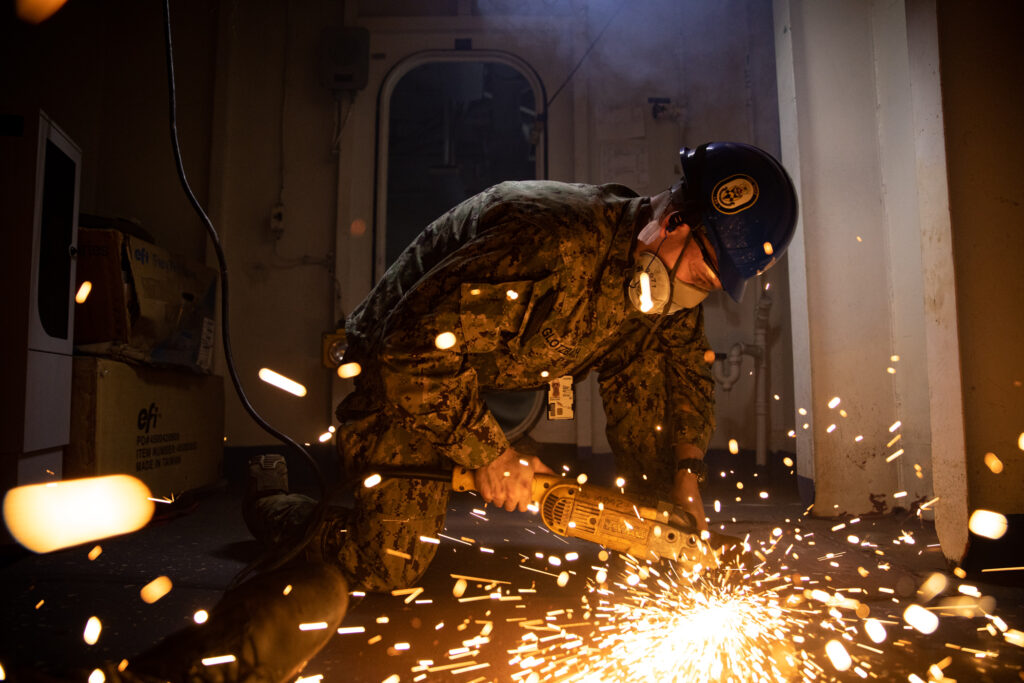
ARLINGTON, Va. — A senior Navy shipbuilding executive said some weaknesses in the ship construction and repair enterprise is hampered nationally by a shrinking supplier base and a lack of skilled workers.
“Material availability is a challenge,” said Matt Sermon, executive director of the Program Executive Office – Strategic Submarines, speaking Jan. 13 at the Surface Navy Association’s annual symposium in Arlington.
A former nuclear-trained surface warfare officer, Sermon said for new construction of ships, schedule and quality of material is an issue, calling material among the top issues driving schedules affecting ship repair availabilities and new construction progress.
Sermon said the end of the Cold War and the resulting so-called “peace dividend” in the early 1990s through the current era meant the number of suppliers for the submarine industrial base declined from 17,000 to 5,000, with submarine construction at a rate of less than one per year. He noted an analogous decline for surface ship construction, with the slow rate of destroyer construction and the completion of cruiser and frigate construction programs.
Globalization of industrial production also reduced the capacity of the U.S. industrial base, he said. Unlike two build-ups in response to large demand in the past, the current great power competition with the rise of China and Russia is trying to respond in the face of significant loss of commercial industrial base available to turn to defense production.
Regarding the strategic competition, Sermon said, “we weren’t on the front end of it and we’re dealing with that now.”
His list of fragile market sectors includes castings, forgings, fittings, valves, mechanical and electrical equipment.
Sermon also said, “we’re a little slow to adapt on technology when it comes to manufacturing,” including additive manufacturing, robotics and automation and non-destructive testing technology.
He also said some requirements need “some updating and some rethinking, and some innovation,” but the use of data analytics and artificial intelligence is helping address delays and shortages
Sermon stressed the United States no longer has the “high-skilled technical-trade workforce underlying foundation,” a condition he attributed to the service economy and the emphasis on a college education for young people.
Throughout the shipbuilding and repair sectors there is a pressing need for more workers with the right skills, including welders, fitters, machinists, and electricians, he said, although industry partnering with technical training schools to train new workers is helping the situation.
- SECNAV Advocates Increased Legal Immigration to Increase Shipbuilder Workforce - April 23, 2024
- Insitu Going Strong at 30, Focusing on Maritime Operations - April 8, 2024
- Navy Awards Boeing Additional Funds for MQ-25 Drones for Testing - April 3, 2024






